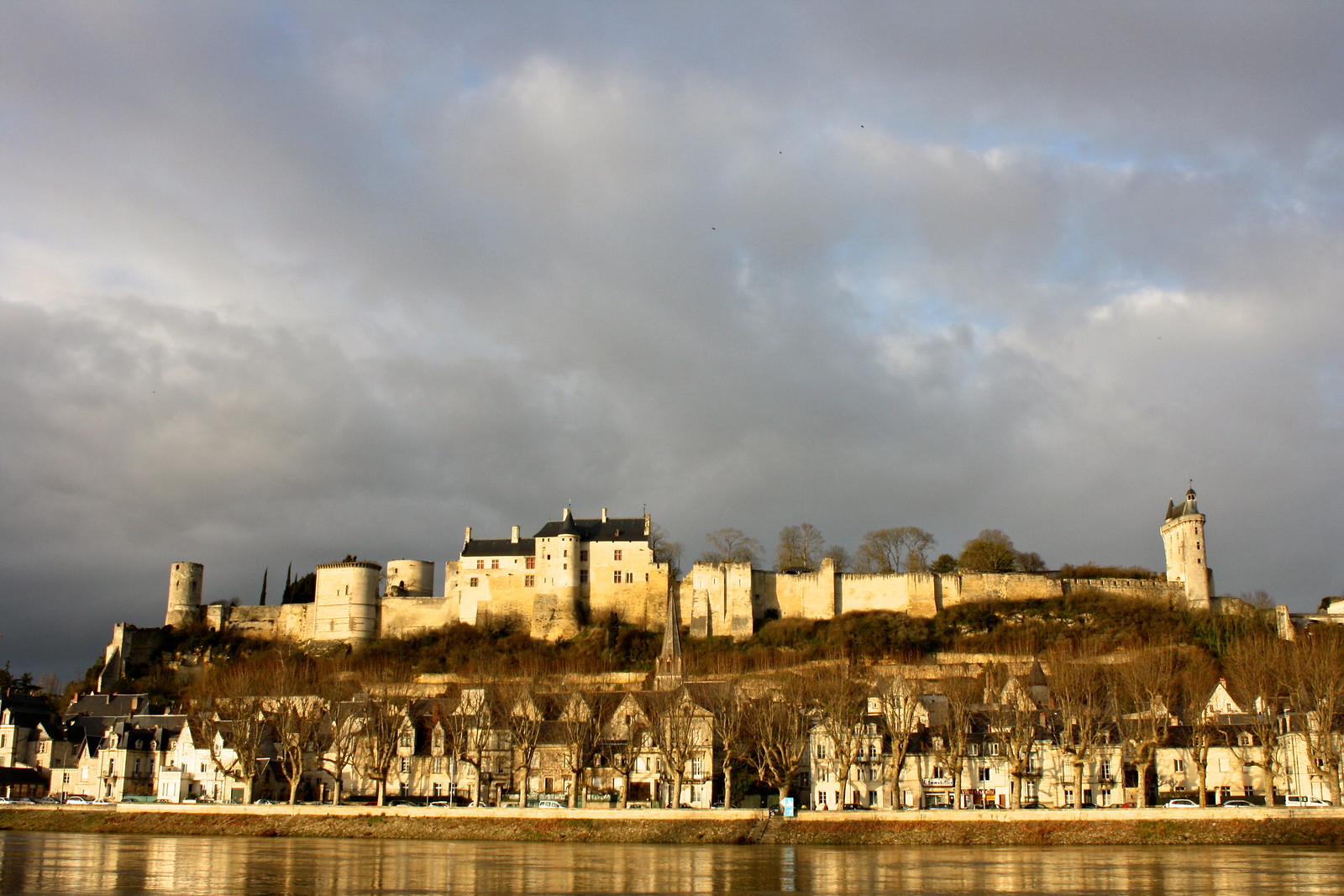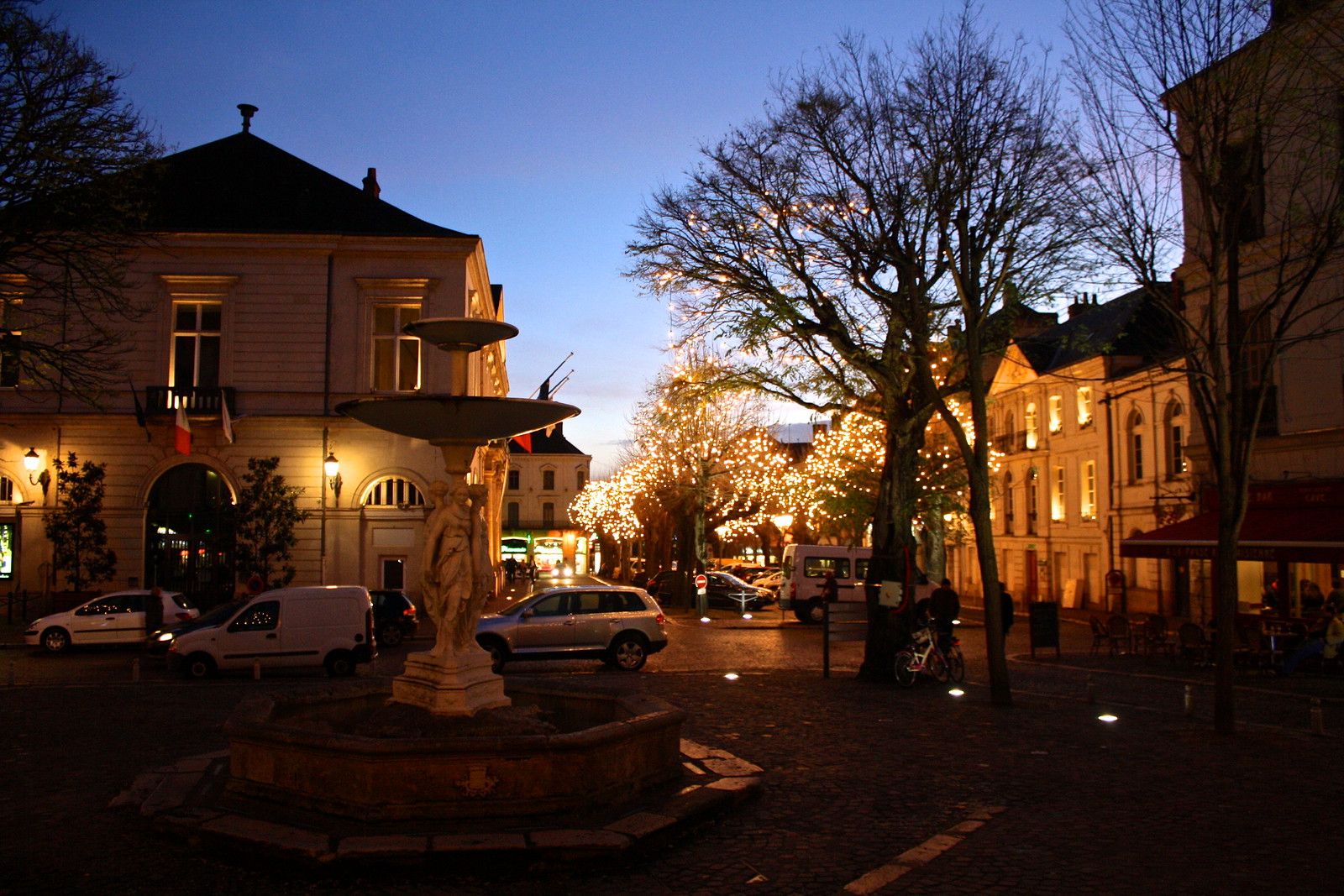The Château of Chinon, France: Chasing Eleanor of Aquitaine’s Old Haunts
Let me preface this post by saying I am the biggest history nerd out here on the blogosphere, or at least the Spain expat one. So my turn south from Normandy and Brittany into France’s Loire river valley took me not to those stunning châteaux (“castles”) like Chambord or Chenonceau or but to a corner of the region that has more to do with a certain medieval king and queen of England than any Renaissance king of France.
This post’s title refers to Eleanor of Aquitaine, who was duchess of that same region in southwestern France in the 11th century, and wife of King Henry II Plantagenet of England, for a time. They had eight children together, including the crusader king Richard the Lionheart and the disastrous king John of England, you know, the one who was forced to sign the Magna Carta in 1212. Eleanor herself was involved in her fair share of political and romantic drama and traveled across Europe and Palestine. She even governed England and parts of France—something unheard of for a woman in the Middle Ages.
I got really interested in the lives of Eleanor and Henry in college, when I took a yearlong course on the history of Britain and did an independent study that included Eleanor. About this time, I came across the 1968 film starring Peter O’Toole and Katharine Hepburn, The Lion in Winter, an adaptation of a play about a fictional Christmas court involving Eleanor and Henry’s family and set in the château of Chinon.
Some people visit New Zealand because they want to experience Tolkien’s Middle earth. Me…I go to isolated French villages (like Bayeux) to feel the history. Since I had this opportunity to pass through the Loire Valley (pronounced “luh-wahr” [lwaʁ]) on my way back into Spain, I thought I would take advantage of it and make a nerdy historical pilgrimage to Chinon’s fortress and the nearby abbey of Fontevraud where Eleanor and Henry II were buried (at least, until their bones were scattered during the French Revolution).
I never got to visit the abbey; no public transport runs there and I wasn’t about to bike there in the winter or spend a fortune on a taxi. I did, however, get to see Chinon.
Sadly, it was rainy, cold, and windy when I got off the train, yet I braved through the miserable weather to visit this fortress on a hill on the northwest side of the city. I learned from the historical brochures that it was one of Henry II’s favorite residences, and was heavily built up during his reign as king of England (he was also Count of Anjou and thus his domains included the western half of France).
This castle starred in history again a few centuries later during the Hundred Years’ War, a dynastic struggle between English and French claimants over who would be king of France. In 1429, Joan of Arc rode here to inspire the dauphin (prince) of France, the future Charles VII, to accept his destiny as king of France and drive out the English from the country. It was a very surreal experience wandering around Eleanor’s old haunts from 800 years ago, as well as one of Joan of Arc’s most important stops.
The castle itself was actually really cool: lots and lots of defense towers, dungeons/tunnels, and royal apartments surrounding a calm, grassy yard. From the watchtower you can get some fine views of the city, the river, and the surrounding countryside, although I couldn’t locate the nearby nuclear power plant (fun fact: 80% of French energy comes from nuclear sources).
The Rick Steves guidebook says Chinon’s fortress doesn’t have much of anything to see, it being in ruins, but au contraire, Rick! From 2003 to 2010, major reconstruction went on that resulted in a fresh, sharp, and gleaming complex of restored towers and dwellings rebuilt as they would have looked in the 1400s.
Pronounced “shee-nohn” [ʃi.nɔ̃], this small village spreads out along the banks of the Vienne River, a tributary of the Loire River. Sharp, slate-gray roofs cover ivory-white homes and businesses for an appealing, uniform effect. Chinon was a really chill and calm place to walk around, from the river banks to the narrow streets, some of which had an overhanging medieval house or two.
Despite being such a small town, Chinon has got a ton of really good restaurants scattered mainly along the pedestrianized streets in the old quarter. For example, I ran across a Tex-Mex restaurant called Le Tennessee—in the middle of rural France. I almost splurged for a hamburger and guacamole, but instead…
I had probably the best meal of my time in France in a place called Côté Jardin: a first course of reilletes and terrine (slices of tender and flavorful processed pork) and a main course of cow tongue curry (don’t knock it till you’ve tried it). I had to have spent probably two hours for dinner between getting a table, ordering, eating through three courses, and paying. But I wasn’t mad…it’s just how the French live and eat, so much more laid-back than the U.S.
Would you stop off at Chinon if you explored the Loire Valley or would you visit other châteaux? Have you ever gone on pilgrimage to historical or movie-related sites? Talk about it in the comments below!

 |
| Royal Fortress of Chinon |
This post’s title refers to Eleanor of Aquitaine, who was duchess of that same region in southwestern France in the 11th century, and wife of King Henry II Plantagenet of England, for a time. They had eight children together, including the crusader king Richard the Lionheart and the disastrous king John of England, you know, the one who was forced to sign the Magna Carta in 1212. Eleanor herself was involved in her fair share of political and romantic drama and traveled across Europe and Palestine. She even governed England and parts of France—something unheard of for a woman in the Middle Ages.
I got really interested in the lives of Eleanor and Henry in college, when I took a yearlong course on the history of Britain and did an independent study that included Eleanor. About this time, I came across the 1968 film starring Peter O’Toole and Katharine Hepburn, The Lion in Winter, an adaptation of a play about a fictional Christmas court involving Eleanor and Henry’s family and set in the château of Chinon.
 |
| Eleanor of Aquitaine and Henry II’s tombs from Wikipedia |
Some people visit New Zealand because they want to experience Tolkien’s Middle earth. Me…I go to isolated French villages (like Bayeux) to feel the history. Since I had this opportunity to pass through the Loire Valley (pronounced “luh-wahr” [lwaʁ]) on my way back into Spain, I thought I would take advantage of it and make a nerdy historical pilgrimage to Chinon’s fortress and the nearby abbey of Fontevraud where Eleanor and Henry II were buried (at least, until their bones were scattered during the French Revolution).
I never got to visit the abbey; no public transport runs there and I wasn’t about to bike there in the winter or spend a fortune on a taxi. I did, however, get to see Chinon.
The château
 |
| Royal quarters |
Sadly, it was rainy, cold, and windy when I got off the train, yet I braved through the miserable weather to visit this fortress on a hill on the northwest side of the city. I learned from the historical brochures that it was one of Henry II’s favorite residences, and was heavily built up during his reign as king of England (he was also Count of Anjou and thus his domains included the western half of France).
This castle starred in history again a few centuries later during the Hundred Years’ War, a dynastic struggle between English and French claimants over who would be king of France. In 1429, Joan of Arc rode here to inspire the dauphin (prince) of France, the future Charles VII, to accept his destiny as king of France and drive out the English from the country. It was a very surreal experience wandering around Eleanor’s old haunts from 800 years ago, as well as one of Joan of Arc’s most important stops.
 |
| Clocktower |
The castle itself was actually really cool: lots and lots of defense towers, dungeons/tunnels, and royal apartments surrounding a calm, grassy yard. From the watchtower you can get some fine views of the city, the river, and the surrounding countryside, although I couldn’t locate the nearby nuclear power plant (fun fact: 80% of French energy comes from nuclear sources).
The Rick Steves guidebook says Chinon’s fortress doesn’t have much of anything to see, it being in ruins, but au contraire, Rick! From 2003 to 2010, major reconstruction went on that resulted in a fresh, sharp, and gleaming complex of restored towers and dwellings rebuilt as they would have looked in the 1400s.
The village
 |
| Chinon and the Vienne River |
Pronounced “shee-nohn” [ʃi.nɔ̃], this small village spreads out along the banks of the Vienne River, a tributary of the Loire River. Sharp, slate-gray roofs cover ivory-white homes and businesses for an appealing, uniform effect. Chinon was a really chill and calm place to walk around, from the river banks to the narrow streets, some of which had an overhanging medieval house or two.
Despite being such a small town, Chinon has got a ton of really good restaurants scattered mainly along the pedestrianized streets in the old quarter. For example, I ran across a Tex-Mex restaurant called Le Tennessee—in the middle of rural France. I almost splurged for a hamburger and guacamole, but instead…
 |
| Place du Général de Gaulle |
I had probably the best meal of my time in France in a place called Côté Jardin: a first course of reilletes and terrine (slices of tender and flavorful processed pork) and a main course of cow tongue curry (don’t knock it till you’ve tried it). I had to have spent probably two hours for dinner between getting a table, ordering, eating through three courses, and paying. But I wasn’t mad…it’s just how the French live and eat, so much more laid-back than the U.S.
Would you stop off at Chinon if you explored the Loire Valley or would you visit other châteaux? Have you ever gone on pilgrimage to historical or movie-related sites? Talk about it in the comments below!

